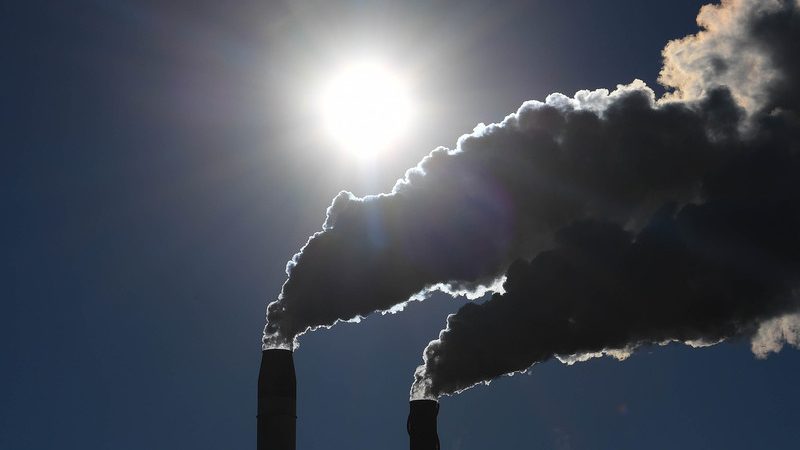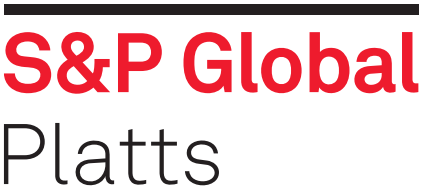
Carbon border adjustment debate divides EC, steelmakers
European Union steelmakers may be at loggerheads with the European Commission on how a Carbon Border Adjustment Mechanism can be introduced in Europe, according to views expressed during a European Steelmakers’ Association March 17 webinar that focused on EU climate policy.
Introduction of a CBAM on top of the EU’s current Emissions Trading System would be an “overcompensation” in terms of ensuring a fair market for clean steel and risks not being compatible with World Trade Organization policies, Mette Koefoed Quinn, the European Commission’s head of unit, ETS Implementation and IT, DG Climate Action, told industry representatives on the Eurofer webinar. The ETS currently offers some free allocations to steelmakers to avoid carbon leakage.
Eurofer’s members are meanwhile pressing for the ETS to continue for a transition period of eight years after the CBAM is introduced, during which time free ETS allocations would continue to be made to EU steelmakers, the association’s director general Alex Eggert said.
This transition period should run until a sustainable market for “green” steel is fully formed in 2030, according to the association.
“We’ve had intense discussions with trade lawyers who all confirm that carbon border measures are absolutely compatible with WTO….. and even a combination of the two (CBAM and the ETS) to cover the delta between free allocations and carbon costs at the border is compatible,” Eggert said. Europe’s steel industry has already suffered a competitive disadvantage – estimated to have cost the sector some Eur3 billion in 2018 at current prices – due to the ETS system, where the shortage of free ETS allocation to the sector is currently put at around 20%, he said.
The EU is extremely exposed to international competition, with a high cost susceptibility because the EU imports around 30 million mt of steel a year and exports some 20 million mt/year, according to Eurofer data.
CBAM may be implemented in 2023
The European Parliament March 10 approved the principle of setting up a CBAM and the EC is expected to move ahead with a legislative proposal for its introduction in June, for possible implementation in 2023. Andrei Marcu, founder and executive director, European Roundtable and Climate Change and Sustainable Transition, said that so far the only place that a CBAM has been applied is in California. However, US President Biden is understood to be considering one at national level.
WTO Deputy Director-General Alan Wolff said last month that cooperation between nations will be essential to avoid disputes around carbon border taxes. On March 5 the WTO launched a Trade and Environmental Sustainability joint initiative group with 53 member countries, which is expected to be a forum for the discussion of carbon border taxes.
Under the European Green Deal, the EU steel industry needs to reduce its carbon emissions by 55% from 1990 levels by 2030, and achieve net-zero carbon production by 2050. According to Eurofer’s climate and energy director, Adolfo Aiello, this may involve investments of Eur144 billion including in breakthrough technologies which could increase steel production costs and prices by between 35% and 100% above current levels, as a well as supplies of up to 400 TWh of climate-neutral electricity, seven times more than what the sector purchases from the grid today .
The investments required are expected to come from steel sector companies themselves, public sector bodies such as the EU Innovation Fund, and ETS revenues, around 80% of which are currently being used for “green” actions, according to the EC.
“We support climate ambition but it needs to be achieved in the most cost-efficient way: higher climate ambition means and needs better carbon leakage protection, and more support for low carbon technologies,” Aiello said. Carbon is currently priced in the EU at around Eur40/mt, having risen dramatically over the past three years after hovering around Eur7/mt for several years. This decade carbon prices might even rise to “three-digit” levels, he said.
“Fair burden-sharing is needed between ETS and non-ETS sectors,” he said, adding the commission needs to redirect more of the ETS revenues to industry.
EC considering six options
The EC is looking at six different options to decarbonize, but does not consider that a CBAM could be complementary to the ETS system, Quinn said. It would be an alternative, she said.
Phase 3 of the EC’s ETS allocation system has just finished, without carbon leakage having been seen, she said. In Phase 4 of the ETS, designed to cover the January 2021 to 2030 period, free allocations to companies are now being calculated.
The overall structure of the ETS is being reviewed: there will be sufficient free allocation, to the benefit of steelmakers, Quinn said. “The current system foresees the sufficient allocation of free allowances until 2029-30: giving adequate carbon leakage protection. However, we’re now looking at whether to introduce CBAM… the commission says it’s either CBAM or free allocation, you can’t have both because that’s a risk of double compensation…. but a transition period might be needed and that’s one of the alternatives we’re looking at,” she told the webinar.
While ETS free allocations are currently giving adequate carbon leakage protection, they are reducing the incentive to go for quick decarbonization: “The pricing is not coming through as it should into the products and this is a problem,” Quinn said. CBAM could provide a useful incentive to the steel industry to decarbonize within Europe and externally, she said.
— Diana Kinch


EC Carbon border adjustment mechanism – Legislative proposal
The European Green Deal adopted by the Commission on 11 December 2019 includes the goal of enshrining the
long-term objective of climate neutrality by 2050 in legislation and increasing the EU’s climate ambition to reduce
greenhouse gases emissions by 50-55% from 1990 levels by 2030. In this context, the European Green Deal
emphasized that “should differences in levels of ambition worldwide persist, as the EU increases its climate
ambition, the Commission will propose a carbon border adjustment mechanism, for selected sectors, to reduce
the risk of carbon leakage”.
The Paris Agreement on climate, as well as strong international diplomacy and leadership, are the EU’s main
instruments to achieve higher climate ambition globally. By COP26 in November in Glasgow, Paris Agreement
Parties need to communicate or update their climate commitments and submit their mid-century strategies, in line
with the Paris objectives. The EU will continue to work with partners to raise the global ambition.

